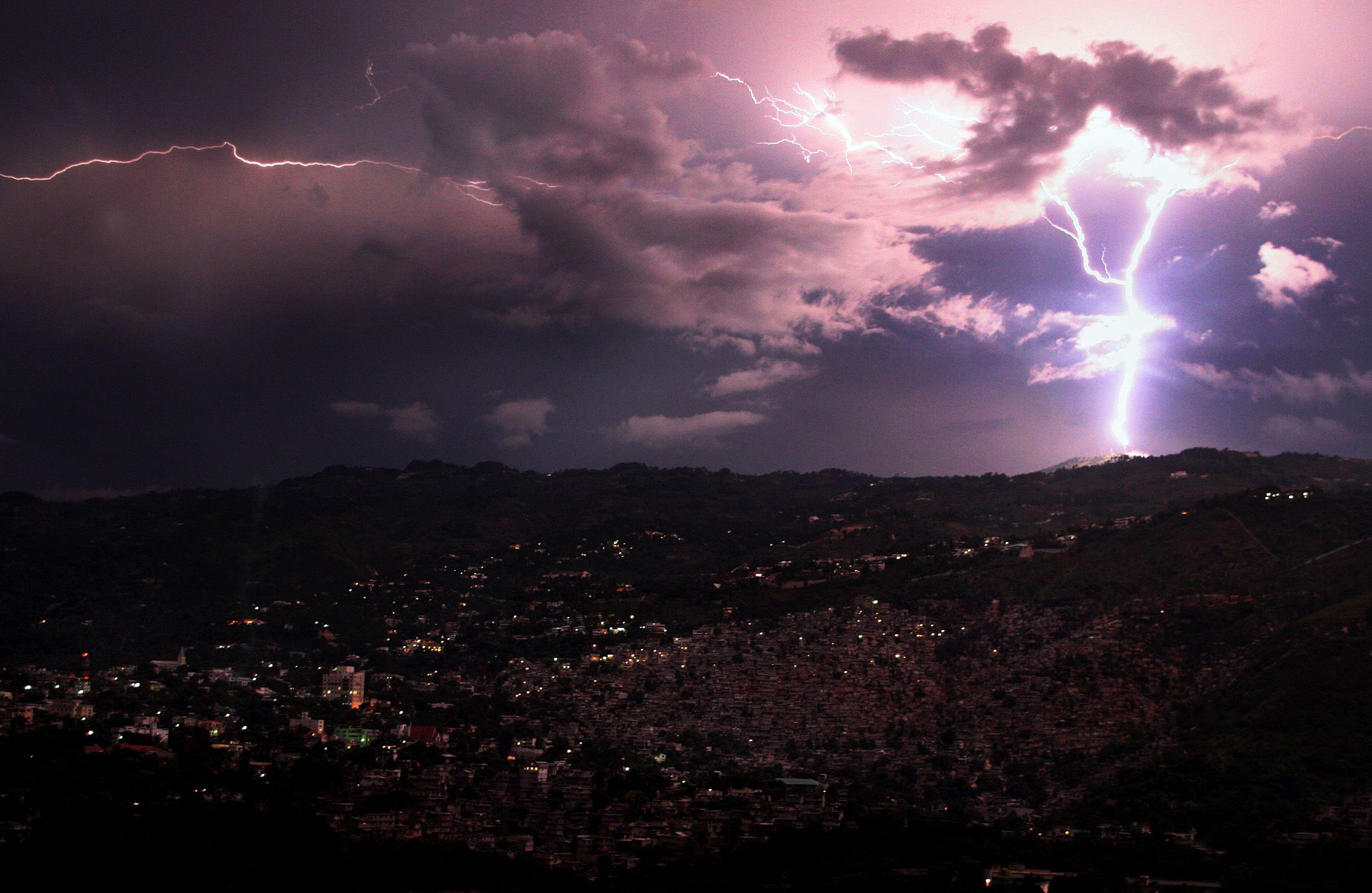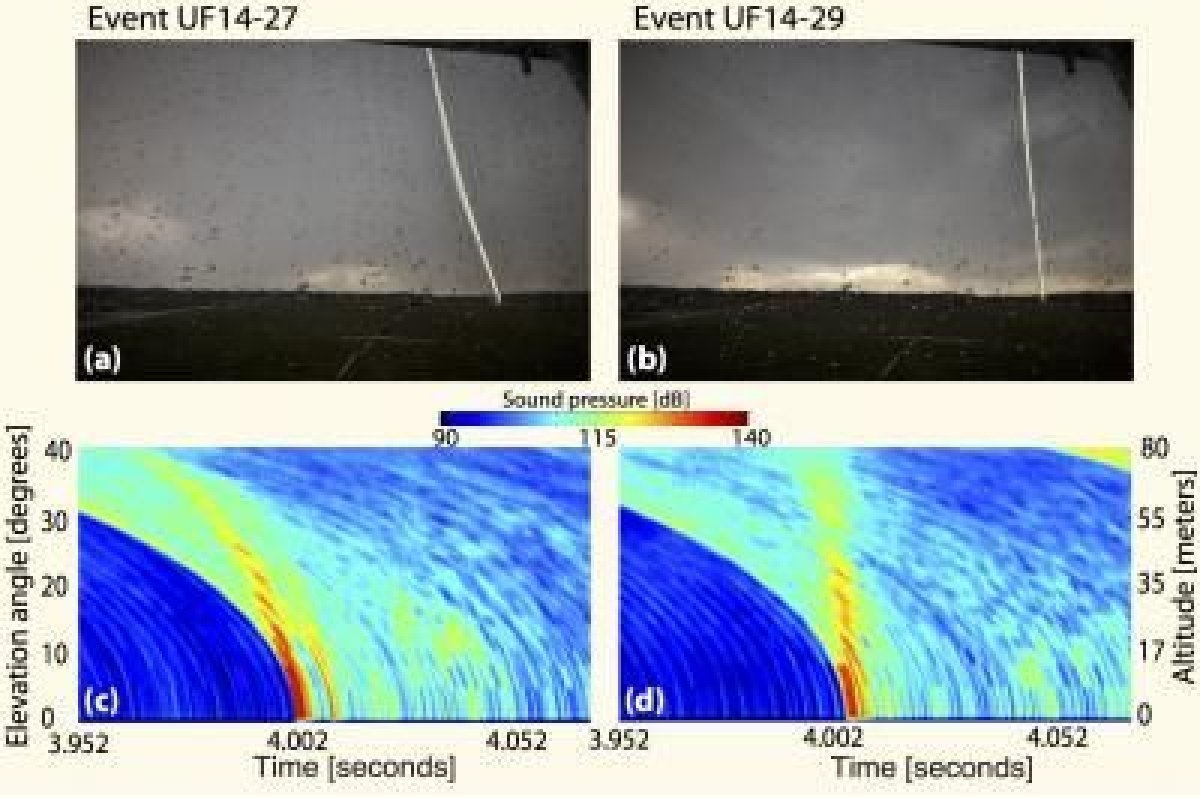
Scientists seem to be courting synesthesia with the study of an everyday phenomenon. Researchers at the Southwest Research Institute (SwRI) artificially induced lightning and created images based on the sound waves from the resulting thunder.
They captured the lightning on video and used a new instrument they built to identify the source and direction of sound emanating from different parts of the lightning and to measure its intensity. Finally, they translated this acoustic data into visual representations. The researchers shared their findings at a press conference Tuesday as part of a joint meeting of American and Canadian geophysical societies in Montreal.
"Lightning strikes the Earth more than 4 million times a day, yet the physics behind this violent process remain poorly understood," Dr. Maher A. Dayeh, a space physicist at SwRI who specializes in heliophysics, is quoted as saying in a press release from the institute. "While we understand the general mechanics of thunder generation, it's not particularly clear which physical processes of the lightning discharge contribute to the thunder we hear."
The basic process by which lightning produces thunder is understood: The lightning heats up air very fast to very high temperatures and creates a shock wave that produces sound. But the new research gives more detailed information about which parts of the lightning bolt and branches are producing what kind of sound and how much of it.
Dayeh and fellow researchers at SwRI, including acoustic engineer Neal Evans, collaborated with the University of Florida, the Florida Institute of Technology and the University of New Hampshire to artificially induce lightning at the International Center for Lightning Research and Testing at the University of Florida, Gainesville, and study the sounds it produced. By triggering the lightning artificially—using a method in which a small rocket is launched into thunderclouds with a copper wire leading down to the ground—the researchers could anticipate where it would hit and set up their instruments accordingly.
On July 14, 2014, Dayeh and his colleagues successfully captured data from a triggered lightning strike using what he calls a "huge ear": 15 sophisticated microphones arranged one meter apart in an array 95 meters from the lightning.
The ability to predict the strike's location allows for measurements from nearby, which is crucial with sound since it is absorbed into the atmosphere as it moves through space. In particular, high-frequency sounds are lost.
"A listener perceives thunder largely based upon the distance from lightning. From nearby, thunder has a sharp, cracking sound. From farther away, it has a longer-lasting, rumbling nature," Dayeh is quoted as saying in the release. It's similar, he explains to Newsweek, to listening to a band play; from close up you'll hear the bass and all the higher tones, but from far away, only the bass is audible. To put it simply: Acoustic data captured closer to the source is more complete and detailed.
Once they captured data using the microphones, Dayeh and his colleagues were able to process it via an algorithm and translate it into a visual representation, what they call a "thunder image" depicting the sounds emitted along the lightning's vertical profile.
In the image, the intensity of sound coming from different parts of the lightning bolt and branches is color-coded like a thermal image: The highest-intensity sound is marked in red and the lowest in blue with a range of other colors for middling intensities in between. You can overlay the representation over a photo of the lightning at that moment to see how they align.
Now "we know where sound is coming from when lightning strikes," Dayeh tells Newsweek. "Instead of imagining as one loud boom, we know it's coming from different portions. As you look vertically [at the lightning] each part emits a sound signal." They found, for example, that the highest intensity sound came from the very bottom of the lightning bolt, near the ground.

The researchers have submitted a paper describing this work to a geophysics journal, where it is currently under review, and they are brainstorming how to build an even more sophisticated instrument to ask more targeted questions about the acoustics of thunder.
Uncommon Knowledge
Newsweek is committed to challenging conventional wisdom and finding connections in the search for common ground.
Newsweek is committed to challenging conventional wisdom and finding connections in the search for common ground.
About the writer
Stav is a general assignment staff writer for Newsweek. She received the Newswomen's Club of New York's 2016 Martha Coman Front ... Read more
To read how Newsweek uses AI as a newsroom tool, Click here.






